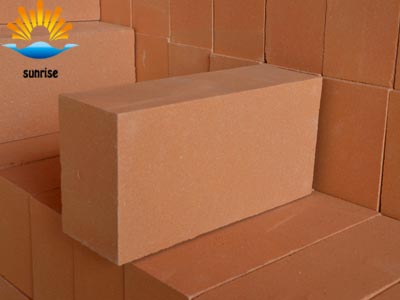Insulation brick selection and function
2018-04-11
At present, there are many kinds of lightweight insulation bricks, and their performance varies greatly. When used as a feeder material. In addition to having low γ and low, the following requirements should also be met:
1 Refractoriness to fit with cast steel;
2 has enough mechanical strength, convenient shape;
3 stable performance when pouring, no gas, no sticky sand, easy to clean.
The observation and recording of the solidification of the riser during the test and application and an anatomical comparison showed that the insulating brick had two functions:
1 Prolonging the setting time of the riser: Compared with the 360x540x700mm waist riser, the setting time of the sand-type riser is 1.5~2.0h, and the riser of the insulating brick is 3.5h or more. This result was also proven in actual casting production. Moreover, the larger the riser, the greater the difference in solidification time.
2 change the shape of the shrink hole in the riser: due to the insulation effect of the insulating brick, the distribution of the solidification temperature field and the solidification isothermal layer in the riser is changed, thus changing the shape of the final formed shrinkage hole. Figure 5 compares the shape of shrinkage holes in an ordinary riser and an insulated riser. Figure 6 is a comparison of the shape of the shrinkage hole in the riser of an ordinary riser and an insulating brick. It can be seen from the figure that the shrinkage hole shape in the riser brick riser is not as concentrated as that of the heat riser, but it has changed from the inverted cone in the ordinary riser to the flat bottom basin shape, and the lower end of the shrinkage hole has no slender shrinkage tube and is intermittent The other diffused hole, the total depth of the shrinkage hole is more than 1/3 shallower than the ordinary riser, and the riser safety height increases.
Therefore, the use of insulating bricks can reduce the riser height and reduce the size. For example, the addition of 'insulation bricks' outside of ordinary feeders can make feeder feeding more reliable.
The rejection of the insulating brick riser can increase the production yield of the process by 5 to 10%. Because of the lower price of the insulating brick standard product, the cost of the riser village is similar to that of the forming and insulating riser sleeve; however, the loss is low and the saved steel is approximately To keep the riser 1 / 3 ~ 2 / 3, so it has a certain economic value.
Table 3 shows the effect of using two insulating bricks for the two castings.
Insulation raiser costs 1,200 yuan/ton, insulation brick costs about 1,3 yuan/block. From Table 3, we can see that the cost per invested brick is 1 yuan, which can save 10-40kg of molten steel. If the consumption of molten steel costs is calculated at 400 yuan/ton, the input-to-income ratio is 1:4 to 1:16.
1 It can be applied to large risers of various specifications and shapes. The larger the riser, the better the effect.
2 easy to use, versatility, especially suitable for single small batch production.
3 not subject to dry, wet type restrictions, not affected by the drying temperature.
4 No gas when pouring, harmless, smooth filling of molten steel.
5 The surface of the riser is smooth and easy to clean.
6 transportation, convenient storage, low loss.
7 The operation of the molding operation is slightly increased, but it is not easy to damage, and it requires low compaction skills.
The use of insulating bricks as cast feeders is only preliminary work. The selection of riser specifications is still conservative. Practical results show. As long as the insulation bricks are properly selected, to a certain extent, they can replace the

